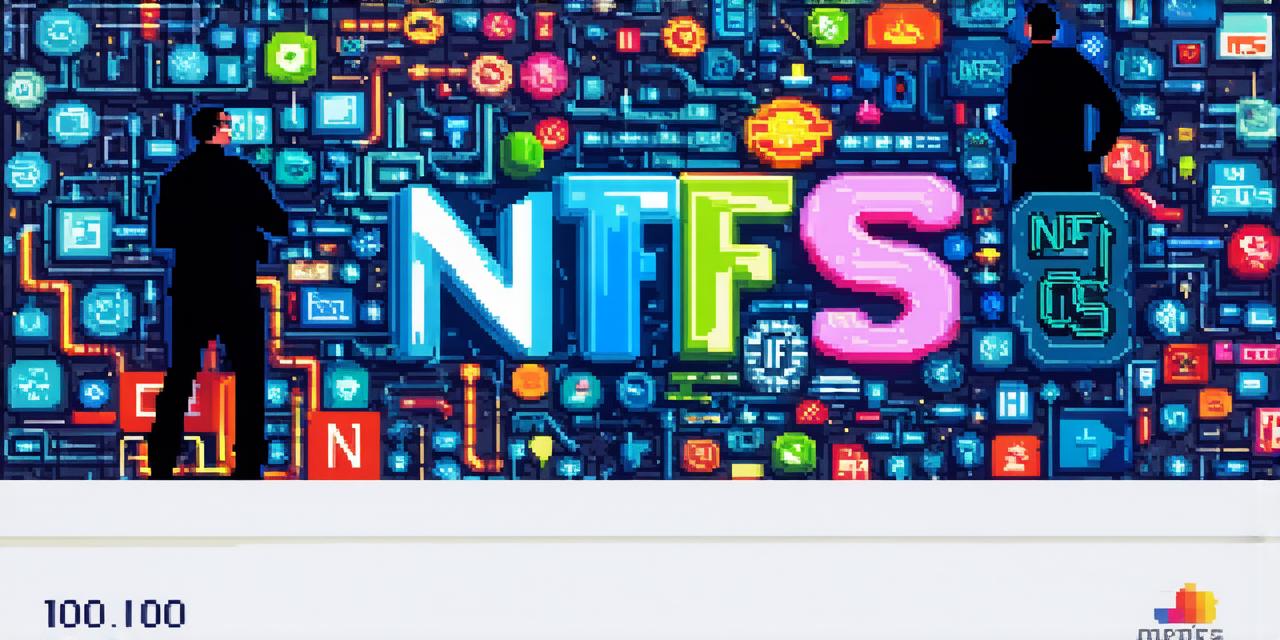In recent years, non-fungible tokens (NFTs) have gained widespread popularity across various industries, from art and collectibles to gaming and finance. But what is it about NFTs that has driven their popularity? This article aims to shed light on the key factors contributing to the growing interest in NFTs.
Introduction: What are NFTs?
Before delving into the driving forces behind the popularity of NFTs, let’s first define what they are. NFTs are digital assets that are unique and cannot be exchanged for other assets of equal value. They are typically stored on a blockchain, which ensures their authenticity and immutability.
The Art Industry: A Pioneer in NFT Adoption
One of the earliest adopters of NFTs was the art industry. Digital art has always been a popular niche within the art world, but with the advent of NFTs, it has become easier than ever for artists to monetize their work and create unique digital assets that are highly sought after by collectors.
NFTs allow artists to create one-of-a-kind pieces that can be bought and sold like traditional artworks. This has opened up a whole new world of possibilities for both artists and collectors, allowing them to create and acquire exclusive digital art pieces that are highly valued in the art market.
The Collectibles Industry: A Natural Fit for NFTs
The collectibles industry is another area where NFTs have found great success. From sports memorabilia to rare comic book characters, collectors can now own unique digital assets that are stored securely on a blockchain and can be easily bought, sold, and traded.
NFTs allow collectors to own one-of-a-kind digital assets that are highly valued in the collectibles market. They also provide a way for collectors to verify the authenticity of their purchases, ensuring that they are acquiring rare and valuable items.
The Gaming Industry: NFTs as In-Game Currency
NFTs have also found a home in the gaming industry, where they can be used as in-game currency or collectibles. This has created new revenue streams for game developers and allowed players to own unique digital assets that can be used across multiple games.
NFTs provide a way for game developers to create exclusive in-game items that are highly valued by players. They also allow players to buy, sell, and trade these items with other players, creating a thriving marketplace for digital goods within the gaming industry.
The Finance Industry: NFTs as a New Asset Class
Finally, NFTs have also found a place in the finance industry, where they are being used as a new asset class. Investors can now buy and sell unique digital assets that are stored securely on a blockchain, providing them with a new way to diversify their portfolios and invest in exclusive digital assets.
NFTs also provide a new way for investors to monetize their digital content, allowing them to create unique digital assets that can be sold to interested buyers. This has created a whole new market for digital goods within the finance industry.
Summary: The Future of NFTs

The popularity of NFTs is only set to grow in the coming years, as more and more industries discover the benefits of this innovative technology. From art and collectibles to gaming and finance, NFTs have found a home in a wide range of industries, providing unique digital assets that are highly valued by consumers and investors alike.
As NFTs continue to evolve and mature, we can expect to see even more exciting developments in this space. Whether you’re an artist looking to monetize your work, a collector seeking rare and valuable items, or an investor looking for a new asset class, NFTs are sure to be an important part of the digital landscape for years to come.
